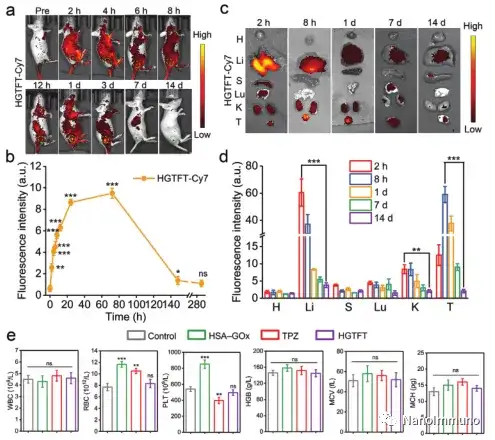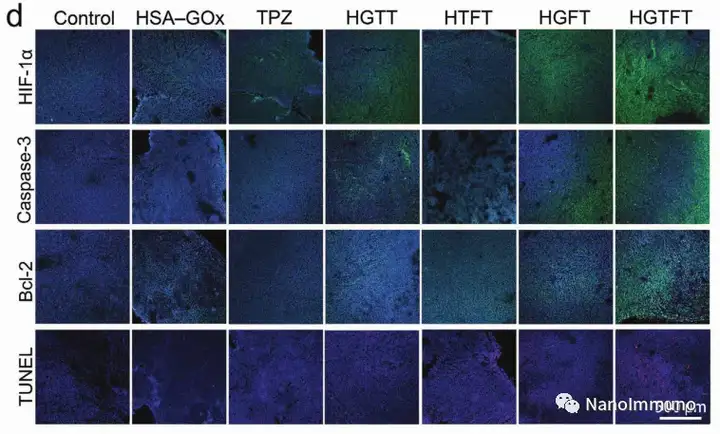Wu Fugen Small: A nanoreactor that depletes glucose and oxygen realizes tumor starvation therapy and a sustainable cascade chemical kinetic therapy activated by hypoxia


Fenton reaction-mediated chemokinetic therapy (CDT) can kill cancer cells by converting H2O2 into highly toxic HO•. However, problems such as insufficient H2O2 levels in tumor tissues and low Fenton reaction efficiency severely limit the performance of CDT. Southeast University Wu Fugen designed a human serum albumin (HSA)-glucose oxidase (GOx) mixture containing the prodrug tilapamine (TPZ) and used a metal composed of iron ions (Fe3+) and tannic acid (TA) -The polyphenol network was modified to prepare a self-amplified nanoreactor called HSA–GOx–TPZ–Fe3+–TA (HGTFT) for Fe3 + / Fe2 + accelerated by exogenous H2O2 generation and TA Transform into sustainable cascade cancer treatments.

The HGTFT nanoreactor can effectively convert oxygen into HO•, consume glucose for starvation therapy, and provide a hypoxic environment for TPZ free radical-mediated chemotherapy. In addition, the nanoreactor can significantly increase the content of reactive oxygen species and low oxygen levels in cells, reduce the content of glutathione in cells, and release metal ions in tumors for metal ion interference therapy (also known as "ion Interference therapy" or "metal ion therapy"). In addition, the nanoreactor can also increase the hypoxia level of the tumor and effectively inhibit the growth of the tumor. This tumor microenvironment tunable nanoreactor with sustainable and cascading anti-cancer performance and excellent biological safety represents the progress of nanomedicine.

In this work, the author used the coordination between natural polyphenols (TA) and Fe3+ to stabilize the HSA-GOx protein mixture loaded with TPZ through self-assembly, thereby forming an HGTFT nanoreactor. The formed HGTFT nanoreactor can deplete O2 and glucose in the tumor area and mediate the sustainable and cascading cancer treatment activated by starvation and hypoxia. HGTFT can effectively convert oxygen into highly toxic HO•, consume glucose to achieve starvation therapy, and provide a hypoxic microenvironment for TPZ-mediated chemotherapy. In vivo studies have shown that the HGTFT nanoreactor has significant tumor accumulation, satisfactory anti-cancer performance and good biological safety.

This work verifies for the first time that GOx, TPZ prodrugs and Fe3+-TA metal-polyphenol network have sustainable and cascading anticancer effects. In view of its strong anti-cancer activity and excellent biological safety, this strategy is a model of targeted collaborative cancer treatment and has great potential in clinical cancer treatment.


Original link:
https://onlinelibrary.wiley.com/doi/abs/10.1002/smll.202000897
NanoImmuno
This information is sourced from the Internet for academic exchange only. If there is any infringement, please contact us to delete it immediately.
18915694570
Previous: ACS Chem. Health Saf:


